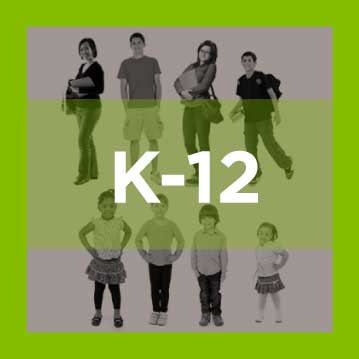After four decades of litigation, affirmative action admissions policies at colleges and universities show no sign of stopping. In the context of higher education, these policies permit the use of race as one of many factors in the admissions process to create a diverse student body.
Proponents of affirmative action policies in higher education often argue that these policies are necessary to remedy the effects of past (and present) discrimination based on race. Moreover, according to proponents, diversity benefits both the institution and the entire student body. Critics counter that these policies are unethical, that they magnify racial prejudice and they can demoralize or stigmatize students of color.
Ultimately, what’s at stake in court cases about these policies is not whether a diverse student body is a boon to students and society but rather whether race-conscious approaches like affirmative action are the most appropriate method for achieving diverse student bodies under state and federal law.
What’s Happening in the Courts?
The current wave of litigation, led in part by advocacy group Students for Fair Admissions, includes complaints against Harvard University, the University of North Carolina at Chapel Hill and the University of Texas at Austin (again). Students for Fair Admissions was established by Edward Blum, the lead attorney in the high-profile Fisher v. University of Texas case, in which the U.S. Supreme Court upheld the university’s use of affirmative action in its admissions policies.
The current focal point for advocates on both sides is Students for Fair Admissions v. Harvard, which was brought on behalf of an Asian American student who was denied admission to the Ivy League school. The complaint argues that Harvard’s policies discriminate against Asian American students and that the university fails to use affirmative action appropriately. (Harvard has dedicated a webpage to the case and its response to these claims.) Final arguments have been heard and the case awaits a ruling from the federal court, which is likely to be appealed to the U.S. Supreme Court.
Meanwhile, Students for Fair Admissions’ case against the University of North Carolina at Chapel Hill has been ongoing since 2014. Another round of litigation against the University of Texas at Austin has only just begun, following the 2016 ruling in Fisher v. University of Texas.
What Are the Alternatives?
Generally, to be constitutional, any race-conscious policy must use the least restrictive means of achieving a compelling interest (i.e., a diverse student body). When this standard for constitutionality is applied to affirmative action policies, the U.S. Supreme Court has found that considering race as part of a holistic review of each applicant is considered appropriate — compared with quota-style admissions approaches, which are not the least restrictive possible approach.
A handful of states have banned affirmative action at public universities, most through voter referenda but also through executive order and legislation. Institutions in these states have sometimes pursued other race-neutral policies, providing an opportunity for researchers to compare the effects of each.
Perhaps the most popular race-neutral alternative is the percent plan, used by California, Florida and Texas. For example, Texas’ Top Ten Percent Plan, in place since 1997, automatically admits to the state’s public universities any students in the top 10% of their graduating class.
A 2003 Harvard study of the percent plan in these three states found that “any increases in racial/ethnic diversity on these campuses cannot be singularly attributed to percent plans because they have happened in the context of the extensive race-attentive efforts made by these schools,” often in the form of “outreach, recruitment, support programs, and financial aid.”
Other race-neutral options include, as described by the Century Foundation:
- Socioeconomic factors in admissions.
- New financial aid programs.
- Improving recruitment and support.
- Dropping legacy preference.
Given that conversations about race in America more broadly are ongoing and often heated and that higher education is viewed is a key means to success for many Americans, we can expect to see these conversations continue.









